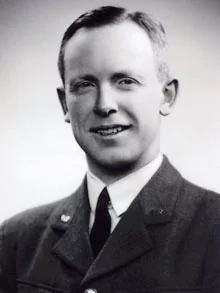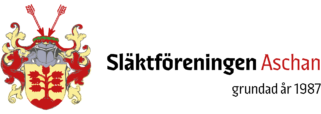Han arbetade för britterna
Läs den smått otroliga historien om Carl Aschan, född 6 maj 1906 i Örebro och gick ur tiden 102 år gammal. Under andra världskriget jagade han nazister som hemlig agent för brittiska underrättelsetjänsten och dekorerades efter kriget.

Nedan artikel från The Telegraph
Wartime intelligence officer who served Britain in his native Sweden and helped to hunt down leading Nazis.
8:00PM BST 22 Aug 2008
Carl Aschan, who has died aged 102, worked for British intelligence in his native Sweden during the Second World War and in 1945 helped to hunt down some of Hitler’s close associates.
Carl Aschan worked for British intelligence in his native Sweden during WW II
Born at Örebrö, Sweden, on May 6 1906, Carl Nils Gunnar William Aschan was the son of a Swedish judge who was also chief of police at Örebrö; Carl’s mother was the daughter of Baron Gabriel Djurklou. When he was 10 his parents divorced, and his mother took him to live in Stockholm, where he attended Norra Real School. In 1920 mother and son moved to London, where he was educated at local schools and by a private tutor.
After reading Engineering at Pembroke College, Cambridge, Aschan went to Germany to seek experience in the aircraft industry with Junkers. Then in 1927 he found a job in the aero-engine department of the Bristol Aeroplane Co. The following year he took British citizenship, and in 1929 joined Wigglesworth, sisal and hemp merchants in London. For two years he was the firm’s representative in Hamburg before returning to England.
Aschan was fluent in all the Scandinavian languages, as well as in English and German. On the outbreak of war he joined the RAF as a pilot officer and was sent to the RAF School of Engineering at Henlow. On April 9 1940 Hitler attacked Denmark and Norway, and a few days later Aschan was invited to lunch at the Travellers Club in Pall Mall by ”a distinguished older man from the Foreign Office” who recruited him into the intelligence service.
He was appointed assistant air attaché at the embassy in Stockholm, capital of neutral Sweden, and on his tortuous journey there he delivered a parcel of shirts from Jermyn Street for Field Marshal Mannerheim, the President of Finland.
In Stockholm Aschan’s primary role was to establish an effective intelligence network in enemy-occupied Norway and Denmark and to maintain contacts in Finland. One day, while walking along Birger Jarlsgatan, he saw in the window of Wiklunds toy shop a display of miniature scale models – exact in every detail – of the entire German fleet. He left the store with nine complete sets, having ordered 10 more from Germany. Three sets were immediately sent to London by diplomatic bag; the others were used to enable agents to identify enemy ships more precisely.
Aschan did not get on well with his nominal superior, the air attaché, who did not know of his links with the intelligence service and succeeded in having him recalled to Britain in November 1940. He returned to England via Russia, Turkey, the Middle East and North Africa.
In Moscow he dined with the British ambassador, Sir Stafford Cripps. In Odessa, just as his party was about to board ship for Istanbul, the senior King’s Messenger realised that he had left the ”Most Secret” diplomatic bag under his chair in the lounge of the Intourist hotel; it was recovered intact before the ship sailed.
In February 1941 Aschan was posted to the Air Ministry in London, where he helped collect and assess intelligence about the Luftwaffe. He wanted, however, a more active posting and the next year he was transferred, in the rank of squadron-leader, to Combined Operations, where his chief was Vice-Admiral Lord Louis Mountbatten.
Aschan was given responsibility for planning operations against German garrisons and installations in Norway and the Channel Islands. His immediate superior was a Cuban, Marquis Casa Maury, who had been a racing driver for Bugatti and was married to Freda Dudley-Ward, former mistress of the Prince of Wales, later Edward VIII.
Aschan planned two successful raids on the Channel Islands to seize enemy documents: one on the Casquets lighthouse, the other on the island of Sark. In the raid on Sark the British commander, Appleyard, captured a German patrol, leaving the prisoners tied and gagged above the high water line.
The next day Goebbels went on the wireless to accuse the British of breaching the Geneva Convention by ”fettering” prisoners-of-war. Aschan and Appleyard were summoned by Mountbatten to explain themselves. The matter was dropped after Appleyard observed that it would have been simpler to have cut the prisoners’ throats, but that he considered this course of action ”repugnant”.
An attempt in 1942 to destroy a large Norwegian power station at Rjukan failed when one of two gliders carrying Commandos crashed in the Hardanger mountains (there were no survivors) and the second was forced to land. The power station was important to the Germans’ nuclear weapons programme, and a year later an SOE-led operation by Norwegian resistance fighters disabled it for the rest of the war.
Another power station and an aluminium works, near Bodö, were destroyed by a force of 12 men, seven of whom were captured and later shot. There was also a successful attack, by motor gun boats, on industrial installations on the island of Stord in the Hardanger fjord.
Among Aschan’s colleagues at Combined Operations was David Astor, whose family owned The Observer. Occasionally he would lunch in Soho with Lady Diana Tiarks, who rode a Triumph motorcycle for her work as a COHQ dispatch rider.
In 1944 Aschan returned to the Air Ministry, with responsibility for counter-intelligence and security in the pending liberation of German-occupied Denmark. His colleagues included Graham Greene and Kim Philby, ”who from the start struck me as excessively secretive and reserved”.
At the end of the war he was sent to Germany, where he was attached to an armoured battalion. At Flensburg Aschan and his comrades arrested the head of the German Secret Service in Stockholm. His team also detained Albert Speer, Hitler’s architect and armaments minister who was later convicted at Nuremberg and imprisoned at Spandau, and William Joyce, better known as the propagandist ”Lord Haw-Haw”.
At attempt to capture Heinrich Himmler was less successful. Told (erroneously) that the head of the SS had taken refuge at Glücksburg Castle, near Flensburg, Aschan and his men arrived there to be greeted by the Grand Duke of Mecklenburg, who protested vehemently at the intrusion.
Himmler was nowhere to be found, and later the Grand Duke complained to George VI – falsely – that Aschan and his party had stolen family jewellery from the castle. (Himmler was arrested shortly afterwards, but committed suicide before he could be interrogated.)
After the war Aschan was awarded King Christian X’s Liberty Medal. He rejoined Wigglesworth & Co, of which he became a director, serving on the board until his retirement in 1989, when the firm was taken over by REA Holdings.
Carl Aschan, who died on July 27, was a man of great charm and impeccable manners. He married, in 1937, Marit Guinness, later the noted enameller and artist.
The marriage was dissolved in 1963, and he married, secondly, Doreen Wentworth Fitzwilliam, with whom he built a house at Appin, Argyll, where he was to spend most of the rest of his life. Doreen died in 1976, and he is survived by the son and daughter of his first marriage.
